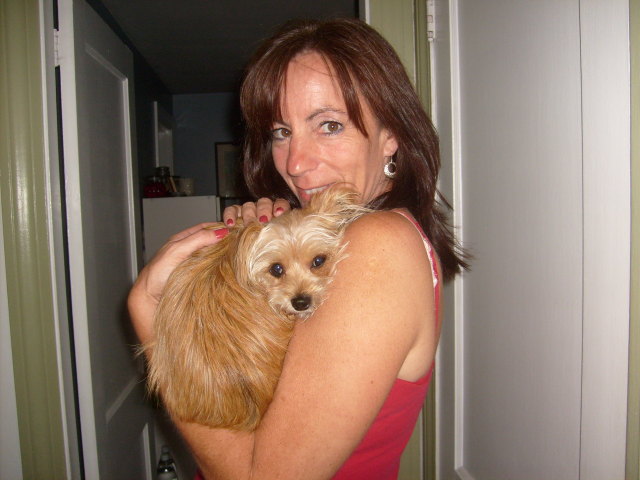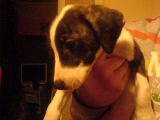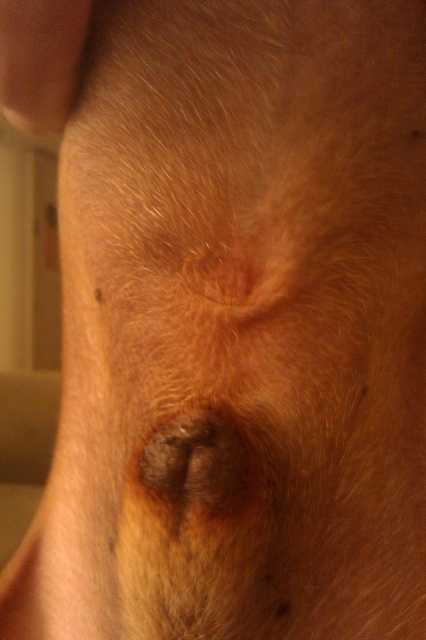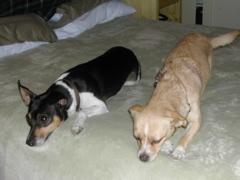QuestionHi,
I have a Lhasa Apso that is 15 yrs. old. I had her since she was two or three. I am concerned that she is getting alhiezers (if Possible. She is very disoriented at times. She cannot hear and I think she may be loosin her sight. I had this same breed years ago and he lived to the age of 12. She is my heart and hate to see her suffer. She is very laid back and always has been. Lately, she has become terrified of riding in a car. She use to ride back and fourth with me from ATL to Detroit. She never ever freaked out. I live in an apt. and took her one night in the car with me to empty the trash. She totally freaked and fell all over the including my lap. What is this odd behavior. She has a;so started to freak when i give her baths. She sleeps alot but her appetite is great. I just want to know if I will know when she is suffering and need to think about putting her to sleep. I LOVE her and don't think I can handle knowing I may have to soon say goodbye. My last dog like her developed cateracs and had cloudy eyes. Do you think she is going blilnd even though her eyes aren't cloudy. Thier is one eye that does produce tears. I just clean and moisten when needed. HELP ME Understand her. I wish she could talk to me at times so I could help her.
AnswerHi Kia,
At 15, it's possible that your dog might be suffering from Canine Cognitive Dysfunction Syndrome, which is the dog equivalent to Alzheimer's Disease in humans.
Dogs with CDS may show signs of confusion and/or various other behavioral changes that are not a normal part of aging. Symptoms include:
Disorientation: Confusion, wandering aimlessly, going to wrong side of doors; appearing to forget previously learned tasks getting "stuck" in corners and behind furniture.
Activity/sleep behavior: Dogs often sleep more during the day, and much more deeply, they often are awake at times they "should" be sleeping, such as during the night. They may act restless and pace or wander inappropriately. Sleep can be increased, often very DEEP, and often at times the dog was previously awake.
Housetraining Problems: Inappropriate elimination in dogs previously well housetrained, or increased accidents in dogs that had occasional ones. These dogs are often disoriented and will, for example, signal to go outdoors, stand in the yard for a while and re-enter the house to urinate, often right in front of the owners.
Change in Family Interactions: Walking away from being petted, greeting owners less (or not at all) at the door, no longer initiating play or petting.
A dog doesn't need to have all of the symptoms mentioned above to have CDS. Because CDS is a syndrome (a collection of signs), no two dogs will show exactly the same symptoms.
There is new drug recently approved for treating dogs with CDS called Anipryl. This drug treatment can provide a better quality of life and slow the progression of symptoms.
In studies, pet owners reported that 69% to 75% of dogs improved in at least one clinical sign after one month of Anipryl therapy. Response to Anipryl may vary from dog to dog.
Canine cognitive dysfunction is defined as the occurrence of one or more geriatric onset behavior problems, which are not sufficiently accounted for by medical conditions. A diagnosis of CDS can only be made after any physical reason for such changes have been ruled out. There is no blood test or scan to diagnose CDS. Your veterinarian will probably want to perform a thorough physical exam with blood tests and a urinalysis to rule out other possible conditions.
Talk to your vet regarding the use of Anipryl.
It's also possible that because of your dog's decreased hearing capabilities, she might be truly frightened by sudden or unexpected stimuli.
If your dog's eyes aren't cloudy, then she doesn't have cataracts. But she might be having other vision problems.
When your vet is evaluating your dog, have him (or her)check your dog's eyes. The eye tearing probably isn't anything serious, again, having your vet examine her is the best idea.
Daily cleaning of the tear stains with mild soap and water, and then thoroughly drying the area can help prevent yeast or bacterial growth.
I hope I've been a help.
Best of luck,
Patti

 Training....
Question
Me with brady
My dog Brady is a year old, he i
Training....
Question
Me with brady
My dog Brady is a year old, he i
 7 week old lurcher pup
Question
this is Lady
hi there me and my partner purch
7 week old lurcher pup
Question
this is Lady
hi there me and my partner purch
 Dry Dog Foods
Question
Prince Duke & Princess
I have two B
Dry Dog Foods
Question
Prince Duke & Princess
I have two B
 Found Dog
Question
this is what it looks
Hello my is sara and my
Found Dog
Question
this is what it looks
Hello my is sara and my
 Vicious fighting between two females
Question
Alice and Julia
I have two female rescue dogs
Vicious fighting between two females
Question
Alice and Julia
I have two female rescue dogs